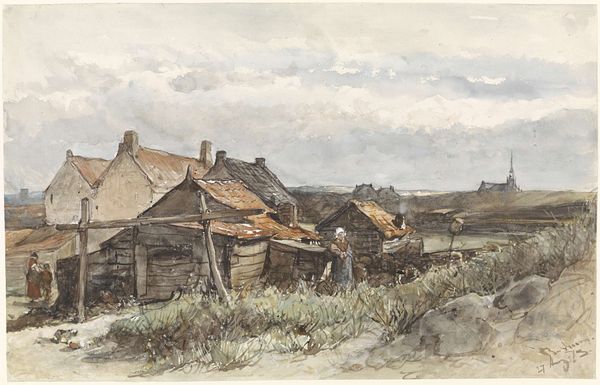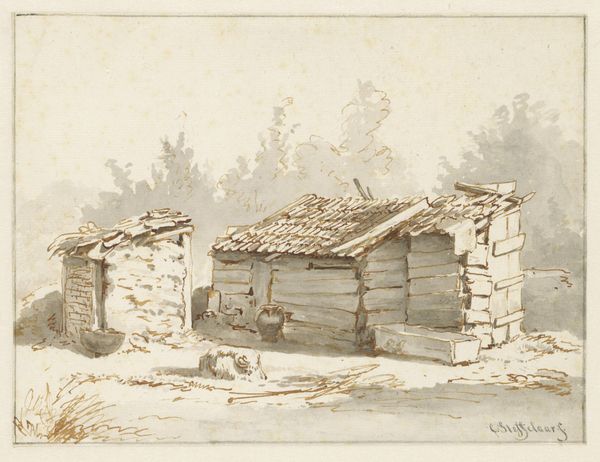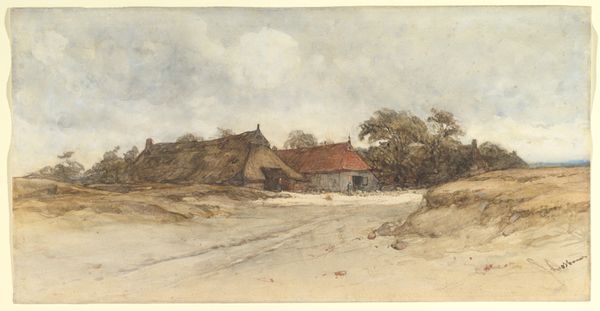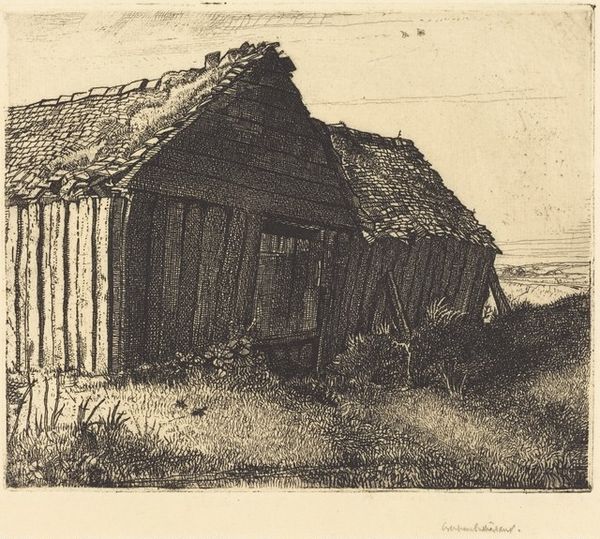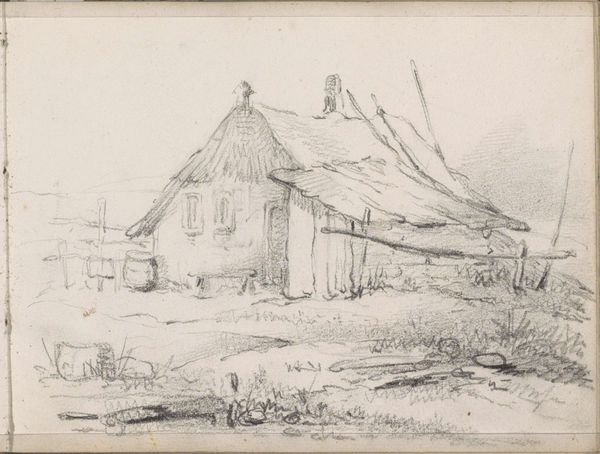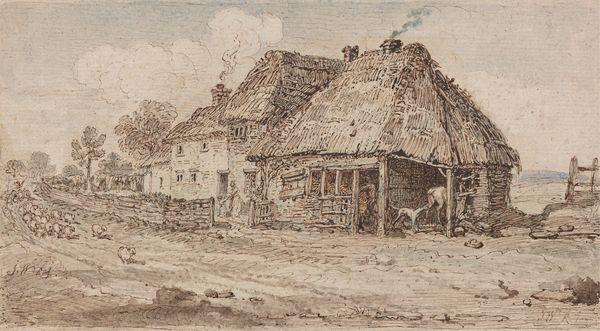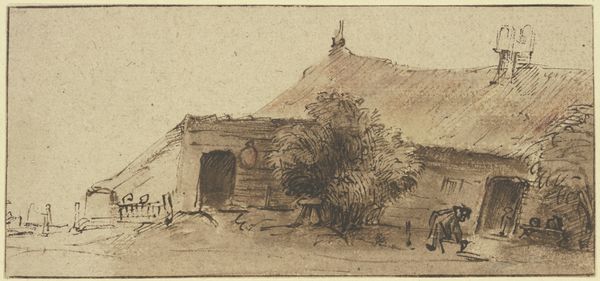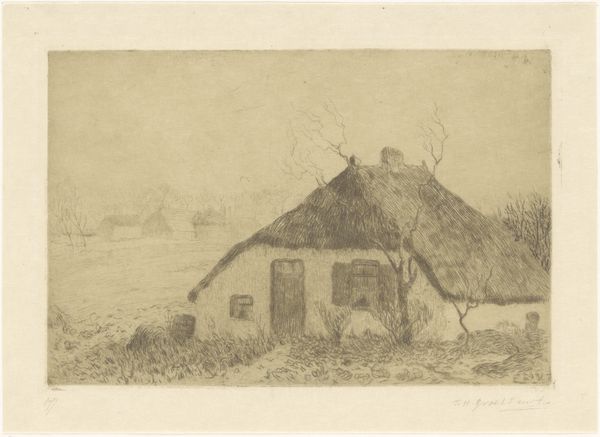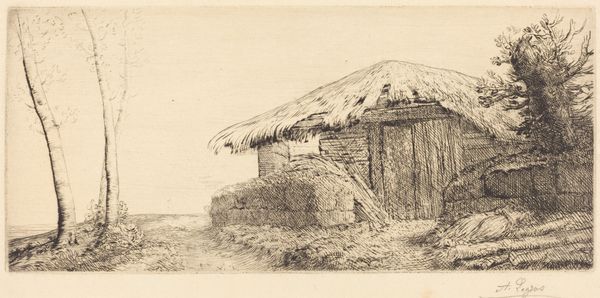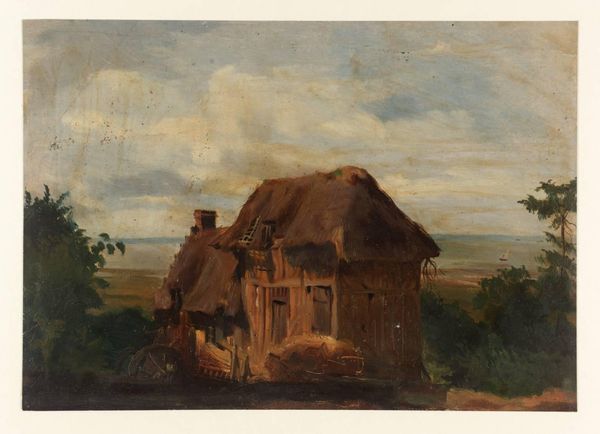
painting, watercolor
#
painting
#
landscape
#
oil painting
#
watercolor
#
mixed media
#
realism
Dimensions: height 236 mm, width 328 mm
Copyright: Rijks Museum: Open Domain
Curator: Here we have "Oude Schuur," which roughly translates to "Old Shed," created sometime between 1834 and 1893 by Willem Anthonie van Deventer. It’s rendered in mixed media, incorporating oil paint and watercolor. Editor: There’s a quiet melancholy to this piece. The colors are muted, almost sepia-toned, and the shed itself looks weather-beaten. Curator: Precisely. This piece, reflecting the style of Realism, begs the question of how rural structures represent not just physical shelter, but also societal dynamics and the very real labor behind building and maintaining them. Whose hands built that shed, and what stories does its aging façade tell about the individuals who labored within and around it? Editor: Absolutely. Looking at the construction—the rough-hewn logs, the way the thatched roof is layered—you get a sense of the available materials and the vernacular building traditions shaping rural life at that time. Curator: I'd also argue this work intersects with evolving notions of land ownership and agriculture practices within the 19th century. Were peasants able to retain common rights? Did they work land owned by aristocrats? It suggests how our relationship with the land and labor creates a deep, lasting connection to place. Editor: That is key, and seeing it painted with these subdued watercolors underscores that very tangible connection—water and pigment mixing to portray weather-beaten wood; the whole thing suggests material degradation as a fact of rural life, and how we find worth even in deterioration. It is all part of a life cycle. Curator: The question remains, does the artist elevate the labor of everyday people, or simply romanticize rural poverty? What is the role of artist making artwork depicting subjects from everyday life? Editor: For me, there is an honest beauty in presenting work and craft without grandstanding, by making labor visible through material attention and not by means of dramatic gesture. It prompts a necessary conversation about social responsibility through craft. Curator: Agreed. Considering it through an intersectional lens deepens the picture here—labor, class, gender, all subtly interwoven within a seemingly simple depiction of a shed. Editor: And through an understanding of the materials, labor, and the time taken to build this rural scene. We begin to truly see its many meanings.
Comments
No comments
Be the first to comment and join the conversation on the ultimate creative platform.
